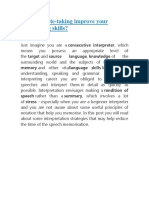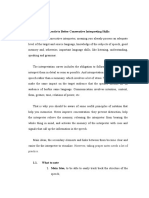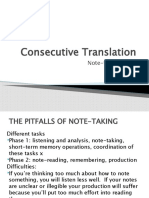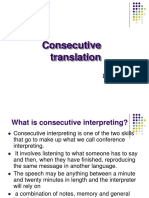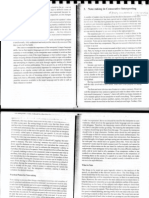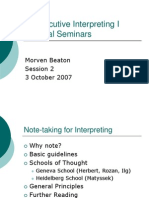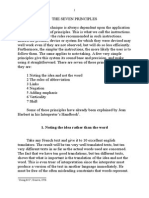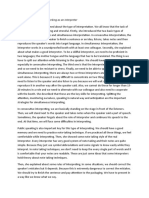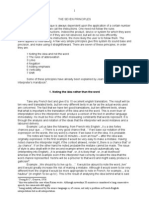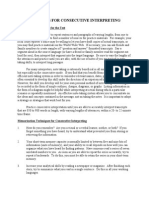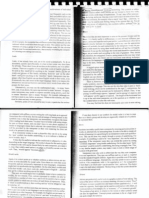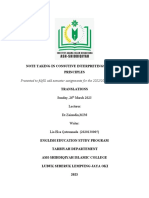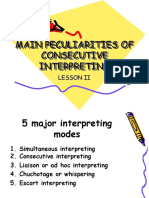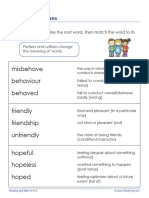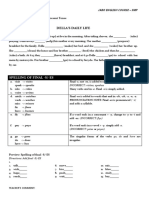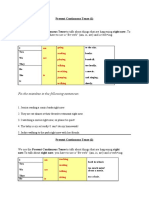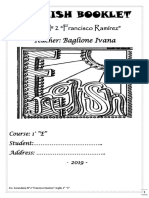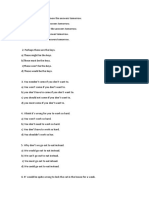NOTE-TAKING IN CONSECUTIVE INTERPRETING
(Part 2)
[…, a successful note-taking technique for consecutive interpretation calls for a
method of reducing words to ideas and putting the ideas into symbols that can then be
re-expressed in another language. An interpreter must not try to write down word for
word everything the speaker says because a hundred words may contain only one idea,
while one word may imply several ideas.]1
SOME BASIC GUIDELINES ON NOTE-TAKING BY JAMES NOLAN2
Your note-taking system must be your own. It must be one that you can easily use,
based on your own style of handwriting.
Adopt and use symbols that are useful for the subjects you are dealing with.
Always use a symbol to mean only one thing in a given context.
Use pictorial or graphic devices like circles and squares or lines and arrows. You are
not “writing out the speech”; you are “drawing a picture for yourself” of the speech.
Arrange your notes on the page in a meaningful way (for example, with the main
points at the top and minor points at the bottom).
Learn and use conventional abbreviations and acronyms (for example, the acronym
SOS to mean “help”).
Adopt a simple symbol which, whenever you write it, will mean “the main subject
of the speech”.
Adopt or coin abbreviations or acronyms for often-used phrases (examples: asap
= as soon as possible; iot = in order to; iaw = if and when).
Invent symbols for common prefixes and suffixes, such as “pre-”, “anti-” or “-tion”,
“-ment”.
When you write out words, do not double any consonants, and delete any vowels
that are not necessary to make the word recognizable or to distinguish it from
another similar word.
1 James Nolan, Interpretation : Techniques and Exercises, Multilingual Matters Ltd, USA, 2005, p. 294
2 Ibid, p.294-295
1
� When interpreting consecutively, write your notes as much as possible in the target
language.
Always have enough sharp pencils or functioning pens at hand.
ABBREVIATIONS AND SYMBOLS
asmble assemblée
arpln airplane
hstry history
cmtee committee
Mrsl Marseille
phlsphie philosophie
Example with the word TIME3
From one symbol, many others can be created; x is used for Time, – For Less, + For More, etc
x– timeless, eternal oldx old-time, old fashioned
xx many times, often x! it’s time, the time has come
x t x from time to time, occasionally gdx a good time
=x equal time x) time limit, deadline
2x twice xtbl timetable, schedule
ltdx limited time x> future
ovrx overtime <x past
3 James Nolan, Interpretation : Techniques and Exercises, Multilingual Matters Ltd, USA, 2005, p. 296
2
� 5 PRACTICAL HINTS FROM SOME VETERAN INTERPRETERS 4
1. Write as few words or symbols as possible and concentrate on listening;
The interpreter’s notes should be of such a type that each word or symbol usually
represents a “key word” or a “sense group” or an important formulation, etc., leaving
an appropriate space between two words or symbols so written. In short, the words or
symbols should be reduced to the minimum in number.
2. Take notes in the target language;
Most interpreters take notes in the target language as this approach saves time and
effort. Of course, there are also exceptions. When some expressions can be much more
easily noted in one language, it is not uncommon to find notes that are taken down
with a mixture of the target language and the source language.
3. Notes must be logical and legible;
The interpreter should be able to make a logical analysis of the speech that is being
made and to take notes accordingly. In this way, the speaker’s flow or sequence of
ideas can be better grasped and noted and therefore better interpreted. At the same
time, the interpreter must see to it that the notes are legible. Notes must be easy to
read, for the interpreter cannot afford the time to hesitate before deciphering them.
4. Note-taking should not take the form of shorthand;
Note-taking in interpreting should not take the form of shorthand. This is because a
time-consuming process of deciphering is needed if all the notes are taken in
shorthand codes. Some interpreters create new symbols which are only known to
themselves. However, these symbols should represent words that appear frequently. In
short, the interpreter should only use symbols which represent words or concepts that
appear frequently and whose meanings he or she is very familiar with.
5. Memory works simultaneously with note-taking;
Memory is expected to work simultaneously with note-taking. We can trust our notes
no more than our memory. Accuracy in interpreting is only possible when we combine
the two skills together. The process of note-taking should be accompanied by memory.
Note-taking is not to interfere in memory.
On Consecutive note-taking: https://www.youtube.com/watch?v=v0yyZ72eiKc
4WEI LU, Developing Note-Taking Skills in Consecutive Interpreting, https://www.academia.edu/6097329/DEVELOPING_NOTE-
TAKING_SKILLS_IN_CONSECUTIVE_INTERPRETING, P. 77-78


